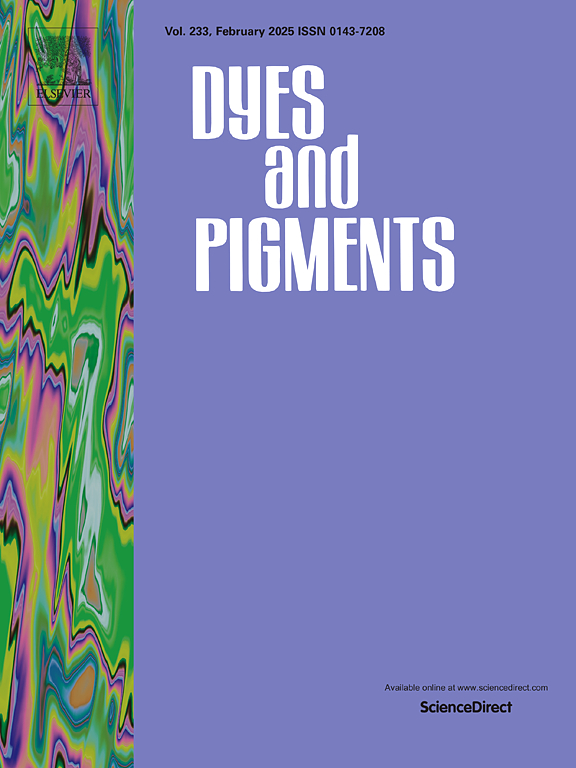三吡啶Zn2+配合物中苯基取代对水中焦磷酸盐传感的系统研究
IF 4.1
3区 工程技术
Q2 CHEMISTRY, APPLIED
引用次数: 0
摘要
基于Zn2+配合物的三联吡啶焦磷酸(PPi)荧光探针具有广阔的应用前景,但目前还缺乏对三联吡啶最佳结构的系统研究。本研究设计并合成了一系列六配位的三吡啶Zn2+配合物。探讨了三吡啶芳香环上给电子基团的位置和数目以及疏水性的变化对选择性识别PPi能力的影响。六种苯基上带有间甲氧基的三联吡啶Zn2+配合物可以通过aie介导的机制检测水溶液中的PPi,对PPi的选择性优于其他三磷酸核苷(NTPs)。更重要的是,在对位上额外引入一个丙氧基,增强了三吡啶Zn2+配合物对PPi的抗干扰能力和荧光响应速度。此外,四种选择的探针也证明了监测无机焦磷酸酶(IPP)介导的PPi水解的能力。本文章由计算机程序翻译,如有差异,请以英文原文为准。
Systematic study of phenyl substitutions in a terpyridine Zn2+ complex for pyrophosphate sensing in water
Terpyridine Zn2+ complex-based pyrophosphate (PPi) fluorescent probes have shown promise, however, a systematic study on the optimal structure of terpyridine for PPi sensing is still lacking. In this study a series of six-coordinated terpyridine Zn2+ complexes were designed and synthesized. The impact of the position and the number of electron-donating groups on the aromatic ring of terpyridine, as well as changes in hydrophobicity, on the ability to selectively recognize PPi was explored. Six terpyridine Zn2+ complexes with meta-methoxy groups on the phenyl ring can detect PPi in aqueous solution through an AIE-mediated mechanism, exhibiting excellent selectivity for PPi over other nucleoside triphosphates (NTPs). More importantly, the introduction of an additional propoxy group at the para-position enhances the anti-interference capability and fluorescence response speed of the terpyridine Zn2+ complex towards PPi. Furthermore, four selected probes have also demonstrated the capability to monitor inorganic pyrophosphatase (IPP)-mediated PPi hydrolysis.
求助全文
通过发布文献求助,成功后即可免费获取论文全文。
去求助
来源期刊

Dyes and Pigments
工程技术-材料科学:纺织
CiteScore
8.20
自引率
13.30%
发文量
933
审稿时长
33 days
期刊介绍:
Dyes and Pigments covers the scientific and technical aspects of the chemistry and physics of dyes, pigments and their intermediates. Emphasis is placed on the properties of the colouring matters themselves rather than on their applications or the system in which they may be applied.
Thus the journal accepts research and review papers on the synthesis of dyes, pigments and intermediates, their physical or chemical properties, e.g. spectroscopic, surface, solution or solid state characteristics, the physical aspects of their preparation, e.g. precipitation, nucleation and growth, crystal formation, liquid crystalline characteristics, their photochemical, ecological or biological properties and the relationship between colour and chemical constitution. However, papers are considered which deal with the more fundamental aspects of colourant application and of the interactions of colourants with substrates or media.
The journal will interest a wide variety of workers in a range of disciplines whose work involves dyes, pigments and their intermediates, and provides a platform for investigators with common interests but diverse fields of activity such as cosmetics, reprographics, dye and pigment synthesis, medical research, polymers, etc.
 求助内容:
求助内容: 应助结果提醒方式:
应助结果提醒方式:


